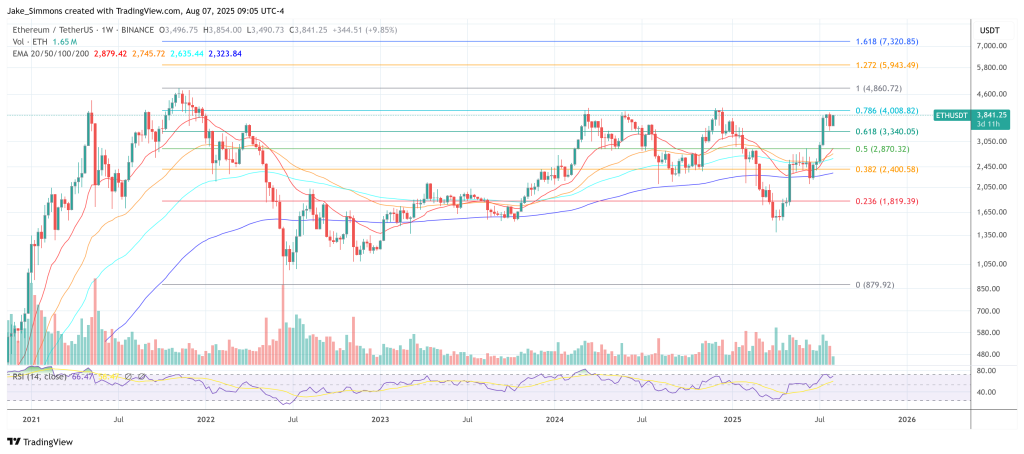Galaxy Digital’s head of research Alex Thorn ignited a fresh debate over Ethereum’s roll-up economy on Wednesday, accusing leading Layer-2 networks of siphoning value from the main chain while leaving ETH holders with “pennies.” In a widely shared thread on X, Thorn argued that “after all these years, the ethereum community is apparently fine that most users are operating on centralized L2s controlled by single companies or foundations… very little value accrual back to ETH holders… sad!”
Ethereum L2s: Centralized, Profitable And Bleeding ETH Dry
According to Thorn, roll-ups now earn between $100 000 and $400 000 in daily fees yet “haven’t spent more than 1/1000 of a penny daily to buy blob objects since May,” pushing less than $10,000 per day to Ethereum for data availability. He highlighted Base—Coinbase’s OP-Stack roll-up—as the most conspicuous example: over the past 180 days Base paid just $3.05 million to Ethereum L1 while sending $4.4 million to the Optimism Collective that licenses its code. “Base is paying more daily to the Optimism Collective than all L2s combined (including Base) are paying to Ethereum L1,” Thorn wrote, calling the margin “a nice business.”
The numbers grow starker in Coinbase’s own filings. Thorn noted that in Q2 2025 Base generated $14.9 million in user fees, spent only $443,000 on Ethereum data costs and $2.16 million on Optimism royalties—just as the exchange disclosed a quarterly purchase of 2,509 BTC worth $247 million.
“Is Coinbase siphoning value from Ethereum and using the proceeds to buy bitcoin?” he asked, framing the decision as evidence that roll-ups can divert economic gravity away from ETH toward alternative assets. Coinbase’s July 31 X post confirms the bitcoin accumulation: 11,776 BTC held at a $740 million cost basis, now valued at $1.26 billion.
Buterin Highlights Technical Roadmap
While Thorn’s critique centered on economics and governance, Ethereum co-founder Vitalik Buterin shared a technocratic roadmap focused on L2 user experience. Celebrating that “so many major L2s are now at stage 1,” Buterin argued that the next milestone must be sub-one-hour native withdrawals—ultimately shrinking to a single slot—enabled by validity (ZK) proofs rather than optimistic schemes that require week-long challenge periods. “Waiting a week to withdraw is far too long… This creates incentives to instead use solutions with unacceptable trust assumptions that undermine the whole point of having L2s,” he wrote, urging builders to adopt hybrid proof systems (ZK + OP + TEE or variants) that deliver speed without sacrificing trustlessness.
Buterin acknowledged that frequent ZK proofs remain costly—single submissions today consume roughly 500,000 gas—yet anticipated near-term aggregation of many roll-up proofs into one, uploaded “once per slot,” unlocking near-instant cross-L2 liquidity while keeping Ethereum the settlement and asset-issuance hub. In his view, technical convergence on validity proofs will erode the advantage of centralized multi-sig bridges that Thorn decries, restoring both security and economic alignment.
For now the gulf between the two perspectives remains. Thorn views the status quo as extraction: centralized sequencers capture margins while remitting negligible fees to stakers, and governance remains anchored in corporate committees rather than permissionless validators. Buterin counters that the pathway to stronger alignment lies through cryptographic engineering that removes the week-long friction keeping capital parked in L2 coffers. Whether economics or engineering wins the argument may hinge on how quickly roll-ups can deploy cheap ZK systems— and whether users will wait for the upgrade or continue rewarding the most profitable sequencers in the meantime.
At press time, ETH traded at $3,841.
